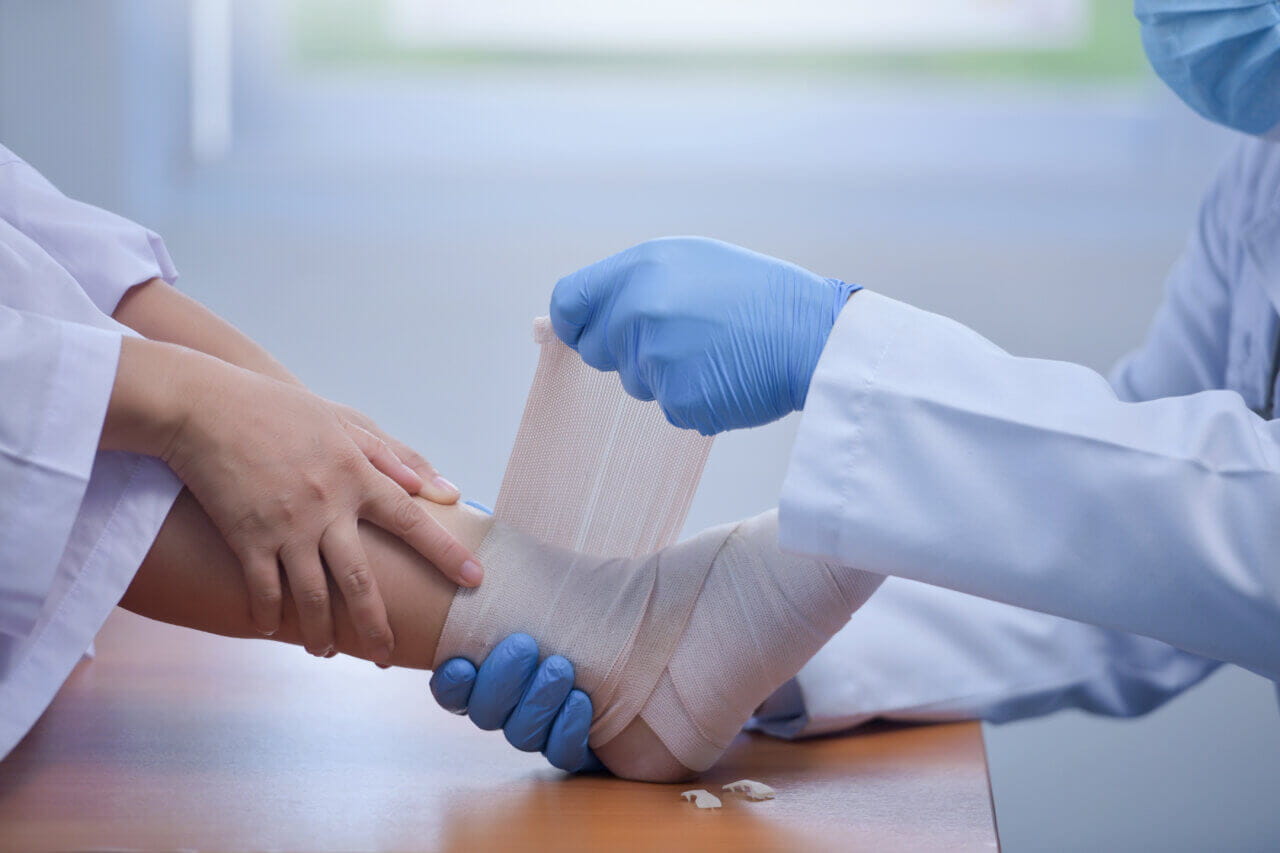Do I Need Stitches?

Cuts (also called lacerations) are common, and most minor injuries can be treated at home. But in some cases, a cut requires stitches. Doctors use stitches to hold the edges of the wound together to aid in healing.
How do you know if you need stitches? The common characteristics of wounds that require medical care are listed below.
But if you’re ever unsure, it’s best to have your doctor or one at an urgent care center evaluate a wound. It’s better to have a medical professional tell you stitches are unnecessary than to skip the visit and have a wound heal poorly or develop complications.
What Are Stitches?
Stitches (sutures) are loops of material that close wounds, prevent infection and promote healing. They’re typically made of fine, sterile thread. A healthcare provider uses a fine needle to insert them into the edges of a wound to hold it together. Some stitches are designed to be absorbed by the body over time, but your provider must remove others.
How Stitches Help with Healing
When should you get stitches? Your provider will recommend stitches if they feel they’ll benefit your recovery.
Stitches help with healing in multiple ways. They hold the edges of the wound together, making it easier for them to fuse and minimizing scarring. Stitches also keep the wound closed, reducing your infection risk. In addition, they may be more comfortable than other wound-closing methods like staples or tape.
10 Signs a Wound Requires Stitches
If you, your child, or someone else you’re with has suffered a laceration, use these 10 factors to help you decide whether to get medical attention:
- Blood is spurting from the wound in time with your pulse. Cuts can sever veins (which are returning blood to the heart) and arteries (which are taking blood to where it’s needed in the body). If you’ve cut an artery, you probably will need stitches.
- Direct pressure doesn’t stop the bleeding. Even in situations where a cut isn’t spurting, if putting consistent pressure on the wound doesn’t stop the flow of blood, stitches are probably required.
- The cut is deeper than ¼ inch. Lacerations less than a quarter inch deep typically can heal without stitches. Those deeper than that typically require stitches to keep them closed during the healing process.
- The cut is near the eyes, mouth, or genitals. You should seek medical attention for any wound in these areas.
- You see white fatty tissue or bone in the wound. If you can see anything in the wound other than skin and blood, you probably need stitches.
- The damaged skin won’t come together or stay together. If it’s difficult to make the edges of the wound meet and stay together, stitches can help.
- The laceration is on a joint. Significant cuts on knees, elbows, and fingers often require stitches since there is less flesh and the skin pulls apart easily, especially with movement.
- Something rusty or dirty caused the wound or it’s a puncture. These types of wounds may require stitches, but just as importantly, they may need special cleaning and care. To prevent infection with this type of wound, the doctor may give you a tetanus shot (if you haven’t had one recently) and prescribe antibiotics. The same advice applies to injuries where a foreign object is protruding from the wound.
- The skin around the wound is turning red, or the cut is oozing pus. Redness, warmth, and pus around a wound are signs of infection. If these symptoms develop, you should seek medical attention. The doctor may clean the wound and then stitch it to keep it closed.
- Severe symptoms accompany the wound. You should get immediate medical attention If you experience severe pain, dizziness, trouble breathing, vomiting, or loss of consciousness due to a laceration.
If a wound needs to be held closed, the doctor will decide whether stitches are needed or if another method such as Steri-Strips (a type of surgical tape) or tissue “glue” is more appropriate.
If your doctor uses stitches, they’ll likely need to remove them after the injury has begun to heal. Don’t attempt to take them out, as that can damage the tissue and increase the risk of infection.
Which Cuts Don’t Need Stitches?
If you get a laceration, it’s helpful to understand a bit about cuts that need stitches vs. ones that don’t. Knowing when to get stitches and when not to get them can save you a trip to your provider. Cuts that typically don’t require stitches include:
- Shallow cuts that don’t go deep into the skin layers
- Clean cuts less than half an inch long
- Cuts that only involve skin layers and don’t expose fat, muscle or bone
If you’re wondering how to tell how deep a cut is, penetration of a quarter of an inch or more is considered deep. Profuse bleeding and being able to see fat, muscle, tendons or bone are also indicators of a deep laceration.
Basic First Aid for Cuts
If you suffer a laceration, take these actions to help with healing and prevent further damage as you decide whether to seek medical attention:
- Gently clean dirt and debris from the wound.
- Apply consistent pressure with a clean cloth or bandage.
- Avoid removing the material to check the injury for at least 5 to 10 minutes, as this can disrupt blood clotting.
- If blood soaks through the dressing, don’t remove it. Apply another cloth or bandage on top of it.
- If an object like a nail is protruding from a deep wound, don’t remove it. Keep it in place to minimize bleeding and infection risk while you go to an urgent care center or emergency room for treatment.
What To Do Before You Go to the Doctor
If you have a wound requiring stitches, you can take steps to address it before getting medical attention. These actions include:
- Leave embedded objects in place to avoid worsening bleeding unless the items are small and easily removed.
- Apply pressure to the wound with a clean bandage or towel and elevate the injury above the heart if possible to reduce bleeding.
- Don’t remove blood-soaked bandages. Instead, leave them in place and layer on top of them if needed.
- Avoid foods and beverages, especially in children, in case sedation is needed.
Are Stitches Painful?
Providers strive to minimize pain when they stitch a wound. Typically, they use a local anesthetic for the procedure. Stitch removal typically doesn’t cause any pain or require anesthesia. You might feel a slight tug as the stitches come out.
How Long Should Stitches Stay in Place?
The amount of time non-absorbable stitches are left in place varies based on the location and severity of the wound. Typically, your provider removes them in five to 14 days. Stitches on the face tend to be removed within four or five days, while those over a joint might stay in for 14 days.
After the removal process, your provider will encourage you to keep the area clean and watch for signs of infection (increasing redness, swelling, etc.) until the wound has healed completely.
What Are My Options Besides Stitches?
Once you have an answer to “Do I need stitches?” you might wonder if there are other options. Yes, there are other ways to close a wound, including:
- Adhesive strips (Steri-Strips), which are thin adhesive strips used for superficial cuts.
- Staples, which are metal fasteners appropriate for larger lacerations.
- Wound glue, which is a medical-grade adhesive that binds the edges of clean, linear wounds together.
What Happens if I Don’t Get Stitches?
If you have a laceration that requires medical attention, it’s important to understand what happens if you don’t get stitches. Leaving a wound untreated increases the risk of infection. It can also delay healing and increase scarring.
Learn About Baptist Health’s Urgent Care Services
Baptist Health has urgent care clinics in several area locations. It’s a good idea to learn about our urgent care services and familiarize yourself with the sites. That way, should you need prompt medical attention for a cut or other injury, you know where to go.
FAQ
How Soon Do You Need to Get Stitches After Injury?
Stitches are ideally placed within six to eight hours after an injury to lower infection risk and promote effective healing. Prompt closure can also reduce scarring and improve overall outcomes.
How Late Is Too Late for Stitches?
Generally, if more than 24 hours have passed, the risk of infection increases and stitches may no longer be advisable. In some cases, a healthcare professional might still consider closing a clean wound, but earlier treatment is generally best.
Do You Need Stitches If the Cut Stops Bleeding?
Even if a cut stops bleeding, stitches may be needed if the wound is deep or likely to reopen. Stitches help align the wound edges for proper healing and can reduce scarring.
What Happens If Stitches Aren’t Removed?
Leaving stitches in too long can increase the risk of infection, excessive scarring, and irritation at the site. In some cases, the body may react by forming granulation tissue, necessitating medical intervention for safe removal.
Next Steps and Useful Resources
The Difference Between Urgent Care & the ER
What To Have In A First Aid Kit
First Aid Basics For Cuts And Scrapes



